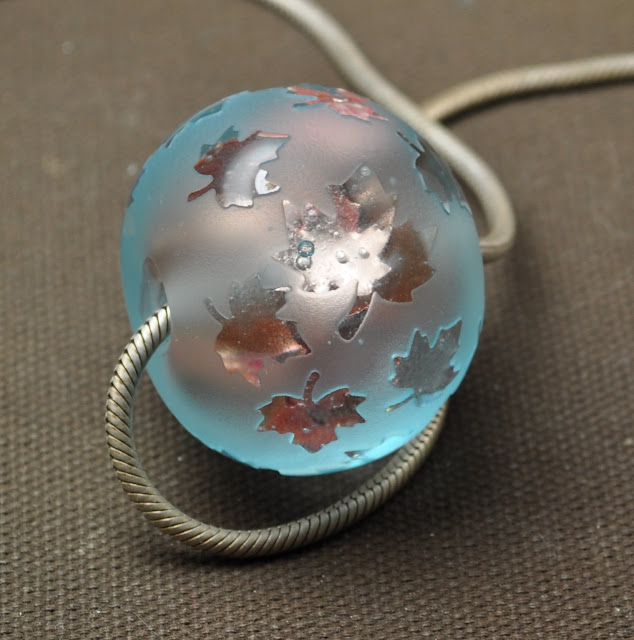Uh, yeah - everything I make is super-sized.
 Ok - the point is not the glass-tipped tiny headpins, I was thinking more of making things on the ends of wire and twisting them into bunches. Bugs, flowers, birds, etc. Anyway - what I wanted to find out was, could I use the new Stainless Steel Wire from Artistic wire in the flame and melt glass onto it.
Ok - the point is not the glass-tipped tiny headpins, I was thinking more of making things on the ends of wire and twisting them into bunches. Bugs, flowers, birds, etc. Anyway - what I wanted to find out was, could I use the new Stainless Steel Wire from Artistic wire in the flame and melt glass onto it.Was it, in fact, real stainless steel?
First up, I emailed Artistic Wire and asked them if it was really stainless steel, or was that just the name of the colour. I got a response within hours, and they confirmed that their Stainless Steel wire is, in fact, Stainless Steel. (Also, their Brass is brass, and everything else has a copper core.) I also know, from previous experience, that most of their products have a thin nylon coating to prevent tarnishing - but I didn't ask about that.
I just cut some lengths and started working in the flame.
No noxious fumes or ghastly odors, so we seem to be good on the no-coating front.
Next lesson learned was that the skinny, and not completely straight wires are tough to hold, and just about impossible to rotate in the hand. I wound up winding the glass around the wire, instead of holding the rod in one place and rotating the wire.You know, exactly what will get you into oodles of trouble if you try to make beads that way.
I then figured out that I could hold the wires in my rod grabber, and that was more comfortable. The wires still weren't straight - so rotating was now possible, but pointless.
But wrapping the glass around the wire works fine.
How to:
- Cut your lengths of wire
- Put a piece of wire into the rod holder if you have one
- Heat the end of the wire to a light glow (you can melt through the wire, just like a skinny mandrel, if you work at it, but light heating is fine.)
- Make a gather
- Touch the gather down on the wire, in from the end of the wire
- Wind the glass around the wire, wrapping around until you run out of glass or it goes stiff.
- Heat the glass on the wire to smooth
- Repeat until you have a reasonable size that you like, and have worked your way over to the end of the wire
- Build some glass out on the end - covering the end of the wire and building up a cap
- Roll in a frit if you like, and melt in
- I heated these and pointed the far end of the wire at the ceiling to let the glass droop into a nice droplet.
- Put the finished "headpin" into the kiln. I put on gloves, reach into the kiln with the wire still in the rod grabber, and let it go onto the floor of the kiln. (Edit. I now grab the wire with a pair of tweezers and use the tweezers to transfer to the kiln.)
- Repeat
So, the verdict is, "Yes - it is real stainless steel and you can use it in the flame." Kewel.

















































